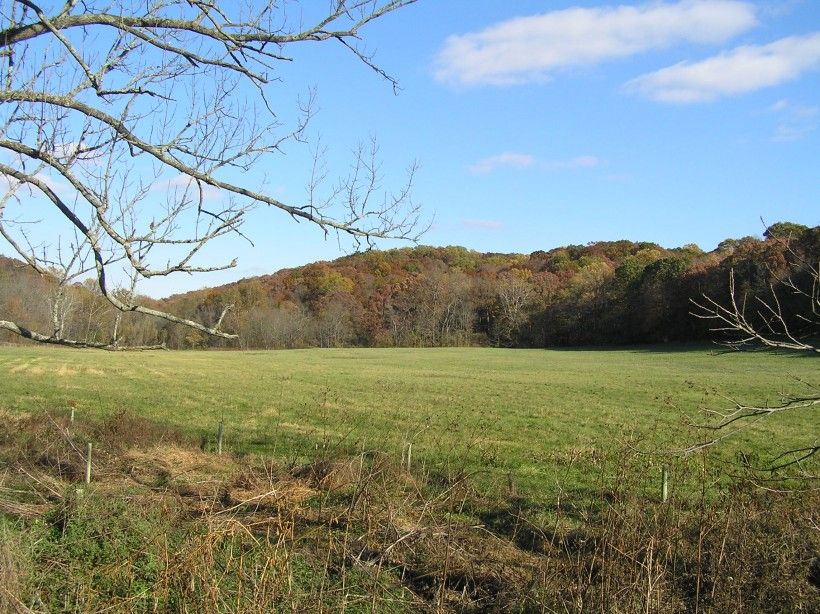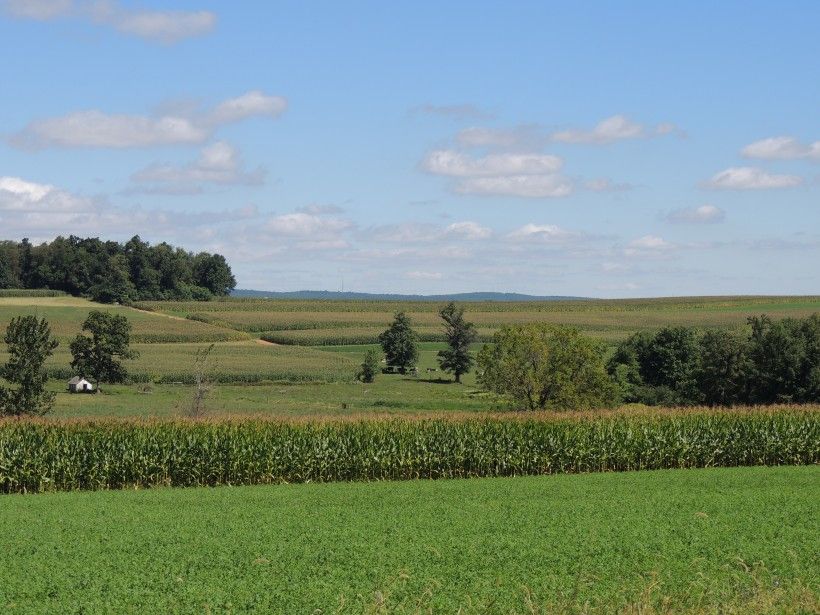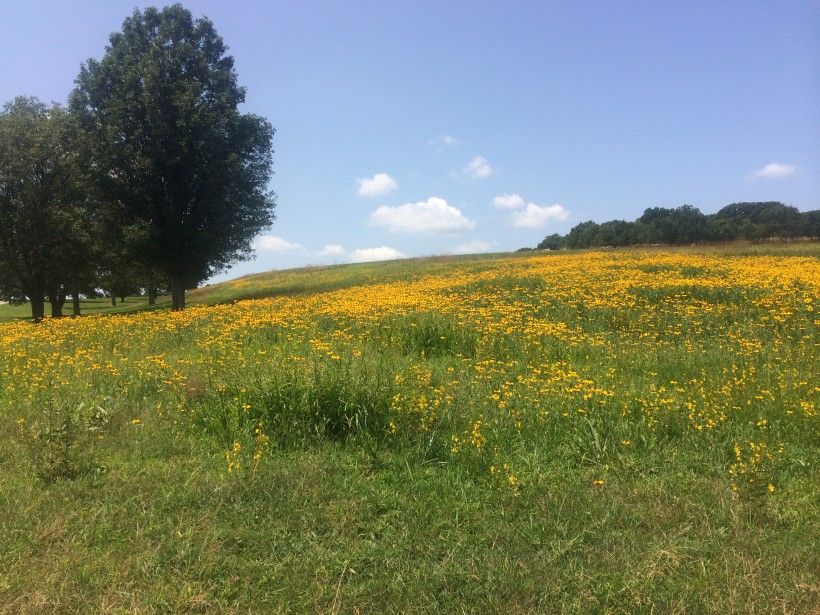
Preserving Your Land with a Conservation Easement
A conservation easement enables landowners to protect their land forever. A landowner who grants a conservation easement continues to own and manage their land while restricting its use in order to protect the property’s significant natural, agricultural, scenic, and open space resources, or “conservation values.” The landowner grants these legal limitations on the use of the land to a nonprofit organization (often called a “land trust”) or governmental entity charged with enforcing the easement’s terms.
Conservation easements protect property, conserve the environment, enhance communities, and provide tax advantages.
How Conservation Easements Work
Central to a conservation easement are its “conservation purposes.” The activities conducted on land subject to a conservation easement must be consistent with the conservation purposes. Common conservation purposes include preserving and maintaining:
- farmland soils;
- water resources, habitat areas for rare, threatened, or endangered species, and mature woodlands;
- historic resources and the landscapes that surround them; and
- scenic views of a property from public roads, right-of-ways or parks.
Conservation purposes can also include providing limited public access in the form of walking and equestrian trails.
What a Conservation Easement Does and Does Not Do
To protect a property’s conservation values, an easement will limit or prohibit certain activities such as:
- industrial and commercial use, except for agriculture;
- excavating, dumping, tree cutting, and altering streams and wetlands.
Conservation easements limit the number, location and type of dwellings and other buildings and also limit or prohibit subdivision. Flexible in design, they may allow future construction or subdivision provided these do not impair the conservation values the easement protects. These “reserved rights” are negotiated between the landowner and the Conservancy before a conservation easement project begins.
Conservation easements that permit agricultural uses require certain management standards. Easements on working farms require adherence to management plans approved by county conservation districts.
Conservation easements do not:
- change ownership of the property or an owner’s right to sell or lease it; or
- require public access, unless desired by the landowner.
In short, the landowner retains all rights of property ownership not restricted by the conservation easement. The Conservancy has no possessory interest in the property nor any right or responsibility to manage the eased land or pay its taxes.
Financial Benefits
Conservation easements allow landowners an opportunity to preserve their land while continuing to own it and possibly gain important financial benefits for doing so. These benefits may take the form of reduced taxes and, in special circumstances, direct compensation.
Federal Income Tax Benefits
The donation of a conservation easement may qualify as a charitable contribution on a landowner’s federal income tax return if it meets requirements of the Internal Revenue Code. Determined through an independent appraisal, the value of an easement (and deduction) is the difference between the estimated fair market value of the property before and after the conservation easement is in place. The amount of the deduction available in any single year is limited to a percentage of the donor’s adjusted gross income, with any remaining value carried over to subsequent tax years.
Federal Estate Tax Benefits
Because a conservation easement will likely reduce the fair market value of a property, an easement donated during a landowner’s lifetime (or by bequest) can reduce the total value of the landowner’s taxable estate, which, in turn, reduces estate taxes. A landowner may choose to convey an easement by will if he or she does not need the tax deduction or cannot use all of the deductible value within the carry forward period.
State Income Tax Benefits
Similar to the federal government, certain states offer income tax incentives in the form of deductions or credits for the donation of conservation easements to state governments, municipalities, and land trusts.
Potential Property Tax Benefits
The reduction of a property’s fair market value due to a conservation easement may also lead to a decrease in property taxes, but only if local assessors recognize the easement’s effect on the property’s value. This benefit may not be realized by landowners whose properties are already enrolled in preferential tax assessment programs such as Pennsylvania Act 319 which assess property at its agricultural value.
Ensuring that the Easement Lasts Forever
Once a conservation easement is granted, the Conservancy assumes responsibility for enforcing its terms. This requires that the eased property be inspected annually. The landowner is obligated to give proper notice and/or receive Conservancy approval before undertaking certain activities. The Conservancy’s easement management team carries out inspections, reviews plans, and responds to landowner questions.


Benefits to the Landowner and to the Public
Conservation easements provide a variety of benefits to landowners, such as:
- Assurance that their property will be preserved forever;
- Potential significant financial benefits through reduced income taxes, estate and/or gift taxes, property taxes in some instances, and, in special circumstances, direct compensation;
- Realization of a tangible commitment to the conservation of the natural and agricultural resources, open spaces, and scenic beauty of their land and the community in which they live; and
- Protection of large resource areas, such as watersheds, scenic landscapes, and agricultural areas, when neighboring landowners also preserve their properties.
Conservation easements also provide significant benefits to the public, such as:
- Protection of important natural, agricultural and cultural assets—water resources, wildlife habitats, productive soils, historic sites and scenic views—while keeping land in private ownership;
- Assurance that eased lands will remain protected forever, a lasting result often not possible through zoning or other land use regulations;
- Prevention of land development that may unduly stress municipal resources as well as municipal and school budgets; and
- Voluntary private implementation of goals established in official planning documents, and a basis on which to build future conservation plans and programs.
Passing the Conservation Test
Federal regulations concerning the tax deductibility of conservation easements and the Brandywine Conservancy’s internal criteria and standards are always met before the Conservancy will agree to hold a conservation easement.
Qualified Conservation Contributions
Congress established standards which an easement must meet in order to qualify as a tax-deductible charitable contribution. Defined as a “qualified conservation contribution” in the Internal Revenue Code (26 U.S.C. 170(h)), a conservation easement must meet at least one of the following conservation purposes in order to be deductible:
- The preservation of land areas for outdoor recreation by, or the education of, the general public;
- The protection of a relatively natural habitat of fish, wildlife, or plants, or similar ecosystem;
- The preservation of certain open space, (including farmland and forest land) where such preservation is for the scenic enjoyment of the general public, or pursuant to a clearly delineated federal, state, or local governmental conservation policy, and will yield a significant public benefit; or
- The preservation of a historically important land area or a certified historic structure.
If the easement gives up development rights without additionally accomplishing one of these purposes, it does not qualify as a conservation contribution for tax purposes. Regulations also require that the conservation easement be granted in perpetuity to a qualified organization, such as the Brandywine Conservancy, and that the organization hold the easement exclusively for conservation purposes. Conservation easements must also comply with state requirements.
Project Selection Criteria and Standards
Internal criteria established by the Conservancy ensure that conservation easements not only meet the Federal standards but also advance the Conservancy’s mission and comply with national land trust accreditation guidelines. Used as the basis on which to accept an easement, these criteria relate to the land itself, its regional context, the proposed terms and/or reserved rights, and the Conservancy’s capacity to prepare, monitor and enforce the proposed easement.
Granting a Conservation Easement
At the Brandywine Conservancy, the process typically begins with a conversation between a landowner and a Conservancy representative about the landowner’s goals for preserving their property and the appropriateness of a conservation easement. This discussion is followed by a detailed project proposal outlining the proposed easement’s goals, terms, and costs.
Once the proposal is signed, the easement drafting process begins. An inventory of the property’s conditions and resources is undertaken and used as the basis on which to draft the easement agreement and prepare a detailed map of the property. That inventory is formalized in a Baseline Documentation Report used for easement monitoring and required if a landowner is seeking a federal income tax deduction. The easement agreement is then drafted and reviewed by the landowner and the Conservancy Committee, a committee of the Conservancy’s Board of Trustees. Once approved by all parties, the documents are signed and recorded.
Depending on the complexity of the easement, professional advisors—hired by the landowner—may be needed to complete a conservation easement transaction and secure tax benefits. These may include:
- A land surveyor, to survey and provide a legal description of the easement area(s) if existing surveys, legal descriptions, and/or boundary markers are inadequate, or to delineate building areas;
- An attorney, to review easement documents and provide independent advice to the landowner;
- An appraiser, to value the conservation easement for purposes of tax deduction or sale. Use of certified general real estate appraisers experienced in conservation easements is recommended; and
- A tax specialist, to assist with the preparation of tax returns and advise the landowner on the timing of granting the easement.
If a landowner has an outstanding mortgage, lien, or other indebtedness secured by the property, it must be subordinated to the easement. This action is required by state law and federal regulations to ensure that a lender cannot extinguish the easement in the event of foreclosure.
Estimating the Cost of a Conservation Easement
The Brandywine Conservancy is a member supported not-for-profit organization with limited funds to cover its operating costs. As a result, landowners are asked to provide for the Conservancy’s cost to prepare and administer the conservation easement they intend to grant. These costs are outlined in the project proposal, and include:
- Staffing and other costs for documenting the conservation values of the property and drafting the easement agreement and a map;
- An endowment contribution needed to cover the Conservancy’s long-term administrative, monitoring, and enforcement costs for the easement. The amount is based on the complexity of the easement, the number of reserved rights, the size of the property, and its location.
Landowners should also anticipate incurring additional costs not included in the Conservancy’s proposal, such as fees for their land surveyors, attorneys, and tax advisors.
Post-Donation
After an easement is granted, the Conservancy’s land stewardship team is always available for consultation on land management practices. Our staff members can assist you in planning your short- or long-term property stewardship goals and provide information on and resources for a wide array of land management issues.
About us
A pioneer in the use of conservation easements and an early and influential participant in the land trust movement, the Brandywine Conservancy was among the first organizations to be accredited by the national Land Trust Accreditation Commission. Accreditation recognizes excellence in land trust administration and adherence to national standards and practices for land protection.
The Brandywine Conservancy is overseen by the Environmental Committee of the Conservancy’s Board of Trustees. The Environmental Committee, representing broad community and conservation expertise, ensures that the acquisition and management of conservation easements meet the highest professional standards.
For more information about Conservation Easements and other conservation services, please call us at 610.388.8340 or email [email protected].